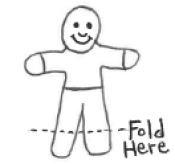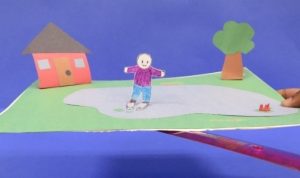Metals are the only substances that are magnetic. But some metals are magnetic and some are not. The most common magnetic metal is iron. You don't see too many objects made of pure iron but you do see lots of different things made of steel, which has iron in it. Try the activity to see which metal objects are magnetic. Then try another fun activity with metals and magnets!
Here's what to do:
- Use tape to attach the magnet to the ruler so that the magnet is facing away from the ruler as shown.
- Place your metal objects in a row. Before touching the first object with the magnet, predict whether or not it is magnetic.
- Now, touch the first object with the magnet to see if your prediction is correct.

- Continue making predictions and testing each object.
How many of your predictions were correct?
Of the objects that were magnetic, what metal do you think most were made of? Was the aluminum foil ball magnetic?
What to expect
The paper clips, jar lid, and nail are probably magnetic. The metal spoon will be magnetic if it is stainless steel but not magnetic if it is aluminum. The penny, nickel, and aluminum foil ball are not magnetic.
What's happening in there?
Of all the materials in the world, only metals can be magnetic. But some metals are magnetic and some are not. The metals that are magnetic (attracted to magnets) are also the metals that can be made into magnets. The most common magnetic metal is iron which is the main substance in steel. Iron is also in a mineral called loadstone which is the most magnetic naturally-occurring mineral.
What else could you try?
If a magnet is strong enough, it can attract a magnetic object on the other side of a material that is not magnetic. You can use magnetism in this way to do a fun art and science activity. Let’s try it!
What you'll need:
- Magnet attached to a ruler
- Tape
- 2 metal paper clips
- Construction paper
- Scissors
Be safe
Be sure to review the safety instructions on page 1 before proceeding.
Here's what to do:
- Trace or draw the little skater shown in the drawing, or use the drawing in the PDF.
- Bend the feet so they face forward and tape them to two paper clips as shown.


- On a piece of construction paper, draw a lake or a winding river (we’ll assume it’s frozen). You can cut out some trees or a house and tape it to the construction paper.
- Place your skater on the pond or river and use the magnet underneath the construction paper to move the skater around.
You could make an obstacle course and see how well you can make your skater complete it.


What to expect
The magnet should attract the paper clips through the construction paper and you should be able to move the skater by moving the magnet!
